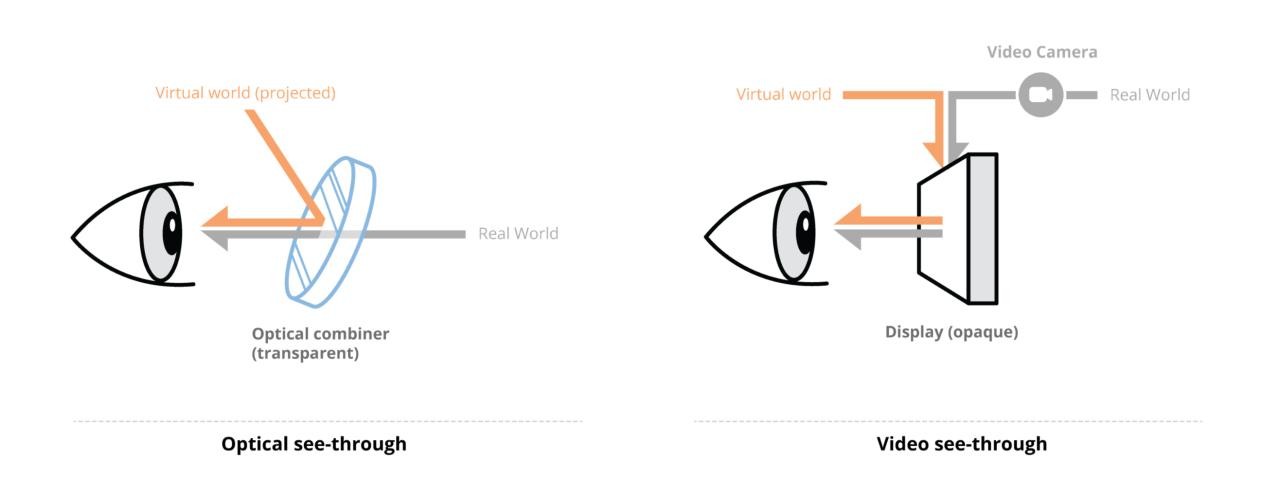OST and VST Technologies: Applications and Limitations for Visually Impaired Users
OST and VST Technologies: Applications and Limitations for Visually Impaired Users
Optical See-Through (OST) Technology involves using transparent displays that overlay digital images onto the real world, allowing users to see their actual surroundings through the display. This technology is beneficial for applications requiring natural depth perception and low latency. For example, in medical settings, surgeons can use OST glasses to see vital information superimposed over their direct view of the surgical site, maintaining full situational awareness without any delay.
Video See-Through (VST) Technology, conversely, uses cameras to capture the real world and then displays this video feed with digital overlays on opaque screens. VST allows for better control over the brightness and contrast of the digital overlays, making them highly visible even in bright conditions. An example of this is in telemedicine, where doctors use VST headsets to conduct remote consultations. The VST technology allows doctors to see the patient’s real-time video feed while overlaying medical information, diagnostic tools, and treatment instructions on the display. 
(Source:https://www.linkedin.com/pulse/vst-vs-ost-which-tech-prevail-xr-dpvr-tkypc/)
Both technologies, while innovative and effective in many standard applications like gaming and telemedicine, have inherent limitations that make them less suitable for visually impaired users.
OST technology, which uses transparent displays to overlay digital images onto the real world, is beneficial in scenarios requiring natural depth perception and low latency, such as in medical settings or augmented reality games. However, for visually impaired users, the transparency of the display can make it difficult to distinguish between digital overlays and the real-world background, especially under varying lighting conditions. This can result in reduced visibility and difficulty in perceiving critical information.
On the other hand, VST technology captures the real world using cameras and then displays the video feed with digital overlays on opaque screens. This method allows for better control over the brightness and contrast of the digital information, making it more visible in bright environments. However, the reliance on camera feeds introduces latency, which can be disorienting for users with visual impairments. Additionally, the use of opaque screens can create a disconnect from the real environment, potentially causing spatial awareness issues
Given the limitations posed by both OST and VST technologies for visually impaired users, HST (Hybrid See-Through) technology presents a more effective solution. By combining the strengths of both OST and VST, HST provides enhanced visibility and clarity while maintaining real-world awareness, making it a superior option for individuals with visual impairments.
